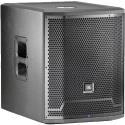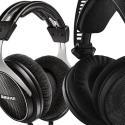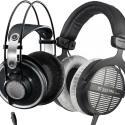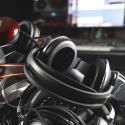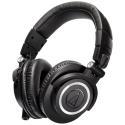How to DJ from Scratch - Follow these Steps
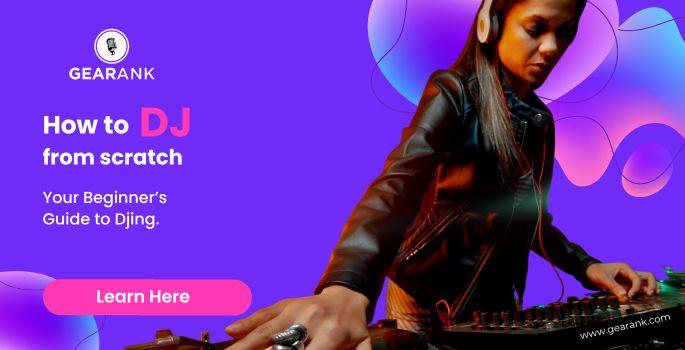
Thanks to digital DJ apps, anyone with a smart device can quickly learn how to DJ.
This article will help you jump-start your DJing in this era of digital controllers and DJ software.
Keep reading to learn more about the various DJ setups, gear, and software - including information on the iconic vinyl turntable.
Where to Start?
Tools previously only available to a professional DJ are now more accessible and require minimal setup. This accessibility helps spread appreciation for the art of DJing to more people.
These days, you can start DJing without assembling an expensive DJ rig. All you need is a smart device with a touchscreen, a good DJ app, and a list of your favorite tracks, and you are good to go.
You can go for a more tactile approach if you can access DJ hardware - like standalone DJ controllers, Digital DJ Decks, and Vinyl turntables.
Whichever path you take, learning how to DJ will boil down to getting the right tools and using them correctly.
But before we get to the specifics, let's answer the most fundamental question.
What is DJing?
Ask any non-musical person what DJing is, and the usual response is "playing and mixing music."
While this simplified definition is valid, DJing has evolved to be so much more. It is now an art form that involves skill, technical knowledge, and creativity.
The most essential thing that a DJ does is to play pre-recorded music. But a good DJ plays music creatively, beyond simple play and stop. Music must effortlessly flow from one track to another, keeping the crowd engaged.
This is achieved using DJ effects and techniques that enrich the listeners' experience. This includes mixing techniques, sound effects, visual queues, vocal adlibs, and an element of psychology.
DJs also have to control the crowd's vibe, using transitions and track changes to affect the crowd's mood and emotions.
This complexity is where DJing becomes more than just playing music. It easily crosses over into a technical art form.
Where Do DJs Perform?
The first venue that comes to mind is a radio station. Traditional Disk Jockeys or Radio DJs play music on the radio.
Other professionals helm the clubs, pumping pop, hip hop, EDM music, and other dance tracks with deep bass.
You'll also find DJs controlling the music flow at other events, like weddings, worship services, birthdays & house parties, private functions, office parties, retail events, live streams, podcasts, and more.
Mobile DJs use portable gear for busking-type performances. While the bedroom DJ is busy honing his skills at home.
DJ Gear 101
Now that you know what DJs are and what they do, let's look at their DJ tools.
Vinyl Turntables
These are undoubtedly the most popular DJ gear. And rightly so, because they were one of the first equipment that helped jump-start the whole DJ genre.
This classic equipment involves:
-
Manually spinning vinyl records on a turntable.
-
Slowing down or speeding up tracks.
-
Producing the iconic DJ "scratch" sound.
Given the age of this technology, functionality and control are limited. But turntables are still sought after for their warm sound and tactile feel.
Digital DJ decks
Digital DJ decks are the go-to gear for most modern DJs. They give you tactile control and many features that make DJing convenient.
They are meant to be all-in-one DJ rigs that allow for many functions like turntabling, mixing, sample triggering, and even music production.
Given their feature set, these are often bulky equipment with complex controls. And they tend to be pricey, which makes them inaccessible for most beginners.
DJ Mixers
These are similar to the mixers found in PA systems, only smaller and with DJ-friendly controls and features.
Essential controls like volume and EQ are available, but what sets them apart are the filters and effects that allow for interesting track transitions.
Digital DJ Software
A DJ app is the software approximation of what a Vinyl turntable does. But it uses your computer or mobile device as its processor. You control the software using a conventional computer interface or pair it with a DJ Controller for a more tactile feel.
The most cost-effective versions are the ones that run on mobile phones and tablets since their touchscreens serve as convenient controllers.
But it will feel like playing an instrument through a screen, so you may want to get a DJ controller for hands-on control.
DJ software benefits from extra features courtesy of digital signal processing. This allows for more mixing options like fades, blends, and more. And it also provides for effects, looping, sound triggering, etc.
The easiest path for aspiring DJs is to get a good DJ app and practice their skills using touchscreen controls. But for those with the budget and space, there's no substituting the feel of a real vinyl turntable.
The added features of digital DJ apps can be both a blessing and a curse. Yes, you get more functionality, but they can also be distractions.
Still, most modern DJs prefer the convenience of digital DJing. The general mixing techniques are the same as vinyl, but digital DJing is more affordable and accessible. Digital DJ setups can provide you with everything you need with minimal gear.
For the uninitiated, digital DJing is more convenient and more accessible to learn. But as they gain experience, they will eventually go for the analog feel and warm sound of old-school vinyl turntables.
This warm sound is why the DJ community still loves old-school hardware despite its limitations.
The digital vinyl system is a middle-ground option for those who want to get the best of both worlds. It gives you some of the feel of analog turntables while giving you the convenience of digital audio processing and control.
Why is Digital DJing Easier?
Becoming a DJ has become more affordable thanks to DJ apps. Going the digital route is the most practical option for a beginner DJ.
Digital DJing is easier due to the valuable features and tools in DJ software and controllers. This includes cue, which holds a specific position in the song, and sync, which can automatically match the speed of a song to another song.
These are typically unavailable on vinyl DJ decks, meaning vinyl DJs must cue and adjust speed manually when mixing, mainly using their ears.
Digital DJing is more straightforward because of the visual representation of song waveforms that DJ software and specific DJing controllers provide. This feature allows DJs to view the song's structure, including individual drum hits, which aids in visual and audible song mixing. This makes it easier to practice applying basic DJ effects and techniques.
Further, digital audio files are cheaper and more accessible than vinyl records. And cost is a big deal for hobbyists and beginner DJs who just want to get started.
Digital songs are downloadable and easy to transport on a hard drive or flash drive, while vinyl records are harder to buy and require a bag to carry around.
Do DJs Still Use CDJs?
CDJs are DJ decks that use CDs instead of vinyl. It's another method of DJing that gained popularity due to its convenience and additional features over vinyl turntables. It's still possible to see DJs using CDJs. Still, the rise of digital DJing has generally taken over CDJing for two reasons: CDs are not as popular as they used to be, and digital audio files are now far more accessible.
What Equipment Do You Need to DJ?
Depending on the type of DJ setup you want, you have three options for the equipment you need: a vinyl setup, a laptop setup, or a standalone DJ controller.
To summarize, a laptop setup is the cheapest option, a standalone DJ controller setup is the most convenient, and a vinyl setup is the "most authentic" but the hardest to learn.
Below, I've listed the equipment you need for the different types of DJ setups.
Mobile Digital DJ Equipment
-
Laptop or Tablet
-
DJ Software
-
MIDI DJ controller (Optional)
-
Headphones / Monitors
Vinyl DJ Equipment
-
Vinyl DJ Decks
-
DJ mixer
-
Headphones / Monitors
Standalone DJ Equipment
-
Standalone Digital DJ Deck
-
Headphones / Monitors
What DJ Headphones to Get?
Next to your DJ Deck, you need to get a pair of headphones. And for best results, invest in good quality DJ headphones.
Headphones are used in multiple ways, like fine-tuning EQ, listening to the next track you'll play (while the current track plays on the loudspeakers), and more.
Regular headphones, or even studio headphones used for music production, won't cut it for DJing. They won't meet the adjustability and durability requirements of DJs. Regular headphones are also not designed for punchy and deep lows.
A good pair of DJ Headphones should have:
-
Powerful drivers
-
Closed-back design
-
Noise isolation (or even noise cancellation)
-
Comfortable ear cups
-
Adjustable headband
-
A long cable or wireless compatibility
-
Good durability
Learning How To DJ - Using the Tools
Being a good DJ requires knowing how to use your tools effectively. This will become a big part of your DJ journey, you have to know the ins and outs of your DJ deck and DJ mixer.
Using DJ Decks
DJ decks house the turntables, which usually come in pairs. One DJ deck plays one track while the other DJ deck preps the next track.
DJ decks can be digital (like Pioneer DJ decks) or analog (vinyl turntables). Or it can be a DJ app. Whichever it is, the basic function is the same.
To make the most out of your DJ deck, you need to be familiar with the response of the two turntables. And this will require consistent practice and test mixes with different tracks. As you get more familiar with how the turntable affects your track, you'll accurately spin to a specific position in a song. And you can apply rhythm and scratch effects with confidence.
You can combine your turntabling techniques with other features like pitch control, fade, and effects.
Using DJ Mixers
The DJ mixer is the bridge between the two tracks of your DJ deck, it can be hardware or software.
So, its main purpose is to create transitions or mix different tracks. This requires familiarity with the volume faders, EQ controls, and the crossfader. And just like any instrument, you need to practice.
Practice fading in and out of different tracks. Start with simple transitions and gradually experiment with the crossfader, filter, and EQ controls. Will discuss fading in more detail below.
Remember to use your DJ mixer well in conjunction with the turntables.
Using DJ Controllers
MIDI DJ controllers are hardware controllers that work with many different types of DJ software. These usually come with two decks and a mixer built-in. The same practice principle applies.
Many DJs use controllers for convenience and compatibility with their favorite DJ software.
Digital Decks are also categorized as DJ controllers, only they have the software built-in, so they work standalone.
Using DJ Software
DJ software is great for learning the basics. You can instantly download a free DJ app onto a laptop or desktop computer and start practicing. You can pair it with a MIDI DJ controller for a more authentic DJing experience.
Using DJ apps with a touch screen allows for better control over a mouse and keyboard. This makes iPads and Android tablets the convenient and portable option for learning the basic techniques of DJing. Just remember not to be distracted by your other apps while practicing.
You can also take advantage of the song waveforms, which you can use to practice your rhythm and timing. This is one feature that you can't get from analog turntables.
Examples of DJ software include Virtual DJ, DJay Pro, Mix Vibes, Serato, Ableton Live, and Traktor.
Most DJ software offers a digital representation of a full DJing setup, complete with all the controls of hardware decks and mixers.
Another important advantage is the ability to load songs directly from your computer. This opens you up to a vast library of songs that can be organized and searched. This setup is far more convenient than arranging multiple vinyl records.
What is the Easiest Music to DJ?
Music with complex syncopated beats is a no for beginners. The easiest music to DJ is electronic dance music with a basic four-on-the-floor beat.
This drum beat is simply a consistent kick drum (think house music and techno music), and is easiest for most DJs to mix because it doesn't change pattern. A four-on-the-floor rhythm, called four-four, is easy to follow with your ears.
It's even easier if you can view the waveform. You can see where the kick drum is in the waveform, allowing you to mix tracks together by lining up their waveforms at the right sections of the songs (called phrasing or stage matching).
Build Your DJ Music Library
Developing a good song library is one of the more exciting aspects of being a DJ. As you learn to DJ, you'll intuitively know which songs mix well and which don't.
When practicing, don't be afraid to experiment with different songs and genres. And try to mimic the mixes of your favorite DJs. You'll initially have a playlist of songs you like, but as you gain experience, you'll incorporate more of what your listeners want to hear.
When you start doing DJ gigs, you might get song requests, so it's a good idea to have a well-rounded library that includes a variety of popular songs for music lovers of all genres.
If you're a vinyl DJ, you must build your vinyl music collection. On the other hand, collecting digital music files is cheaper and easier.
Learn How To DJ: DJ Techniques
Beatmatching
Once you get the basics down, you can delve into beatmatching. This involves matching the beats of two songs for a seamless transition.
This technique was developed by the famous DJ Francis Grasso back in the '60s, and it is still widely used to this day.
To achieve this, you have to adjust the speed of the cued track to match the beat of what's currently playing. This speed adjustment usually results in a change of pitch.
To ease into beatmatching, practice on songs with similar BPM (beats per minute) values. While playing the first track, cue up the second one and listen to the beat and rhythm. The key is focusing on the kick drum and other prominent rhythm elements. Then, adjust the pitch control on the second deck until the beats of the two tracks align.
This process becomes more tricky when pairing songs with different beats and syncopation. But that is where this technique shines. So, if you want to learn this technique properly, gradually work your way up to pairing songs with different BPMs to build your confidence level.
As you become a DJ with more experience, you can aim for advanced beatmatch techniques. This involves weaving different sections of songs, such as overlaying vocals from one song onto the instruments of another.
You can use sound to beatmatch by listening to the song you want to mix on headphones. Or you can supplement this with the use of waveforms by visually lining up the song using DJ software or standalone controllers.
Applying Fade
This is the most basic DJ technique that you need to know. It is the process of smoothly transitioning from one song to the next without changing the beat or breaking the structure of the music.
DJ fading is done using the crossfader at the bottom of the mixer. Generally, when the crossfader is on one side, the deck on the same side will play through the speakers. Both decks will play through the speakers when the crossfader is in the middle.
Practice fading in and out of songs first. Then try to use fade in more creative ways, like when emphasizing a bridge section. A well-employed fade can add dynamics and emotion to an otherwise flat dance track.
Using EQ
EQ, short for equalization, is a useful tool in DJ mixing. It has an effect that can alter the frequencies of the music, so you can avoid frequencies clashing when mixing two songs.
For example, if the cymbals are clashing, you can reduce the treble of one of the songs. If the bass melodies are clashing, you can reduce the bass of one of the songs.
EQ controls are found on DJing mixers - the bass, mid, and treble knobs are usually located above the volume faders.
In addition to adjusting the frequencies to help two songs mix together, EQ can also be used as a DJ effect, such as cutting out the bass before a beat drop.
Create a DJ Set
A DJ set is a selection of songs you have chosen to mix one after the other, which can be performed to live audiences or recorded for uploading to social media.
This is where you showcase your DJ techniques and the type of music and songs you want to play - in a structured way.
More than a list of songs, you need to make sure that you take note of the effects and techniques you used on each song transition or mashup.
When making your first DJ set, go for songs your target audience will appreciate. Regardless of where you are in your DJ career, put your best foot forward when performing live - that is, select songs that you are familiar with.
Learn to DJ Live
The final step to becoming a complete DJ is to learn how to perform in front of an audience. Sooner or later, DJs need to showcase their talents to people on a stage or on a booth.
Live performance is a great way to learn to tackle performance fears and distractions caused by external noise, both of which can ruin your concentration.
I don't recommend doing impromptu mixing, but there will be times when audience members request songs not part of your DJ set. So improving your DJ skills and expanding your library is a must.
It won't always go smoothly, especially during the first few times. But with practice and adjustments, you will gain valuable audience interaction experience, and more importantly, you will eventually make a fan or two.
You can always start by playing your DJ sets to people you trust, like your close friends or family. Many artists and club DJs started out by playing unpaid gigs for their relatives and friends!
Like in other musical disciplines, there's no replacing the fun and thrill of communicating your own music and art to an audience.
Conclusion
Now you know that learning how to DJ is like learning a musical instrument.
It involves skill, technical knowledge, creativity, and the ability to perform live.
The principles discussed here will give you a solid foundation for DJing.
So if you want to get serious and be a better DJ, find yourself a mentor (or a tutor) who can help you get to the next level faster. Alternatively, if you are wanting to collaborate with other musicians you should understand how to start a band.
Either way, enjoy your music, take action and get creative.



